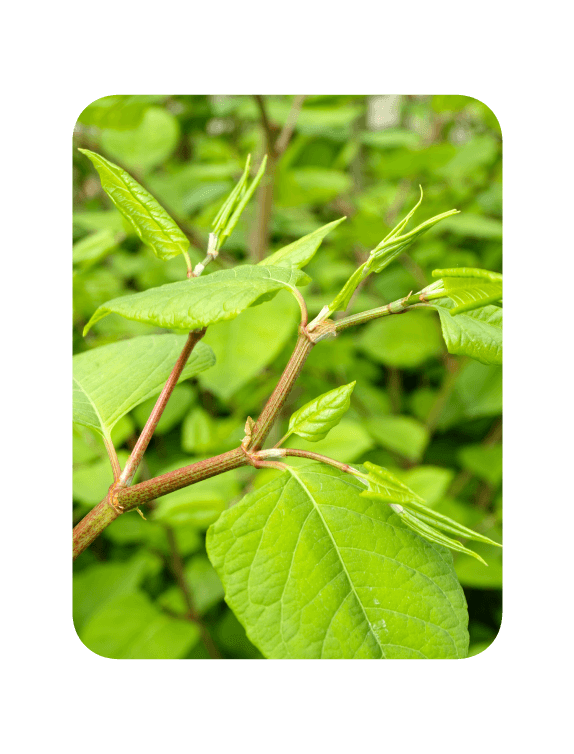What is giant knotweed and hybrid knotweed?
Giant knotweed is similar to Japanese knotweed, but as the name suggests, much larger in size. Giant knotweed can grow to more than 4 metres in height and its leaves can span around 20-40cm, and roots which can extend to depths of 2m.
In the Spring, reddish shoots emerge and begin to grow rapidly, reaching heights of around 4m by the Summer, when flowers, of white with a green tinge, will appear in amongst the dense foliage. In the autumn, the foliage begins to wilt as the leaves turn yellow. By Winter the plant above the ground will be reduced to pale hollow stalks that can take 12 months or more to decompose.
A Japanese knotweed and giant knotweed hybrid called Fallopia x bohemica can also be found in the UK. This grows somewhere between the 2.5 – 4 metres. The leaves are larger than Japanese Knotweed but smaller than giant knotweed, and it has flowers of white and cream with a green tinge. The leaves can also vary in shape from square ended to heart shaped and both variations can appear on the same plant.
Originally from Japan, China and Taiwan, they escaped from ornamental gardens, and have become established across the UK.










